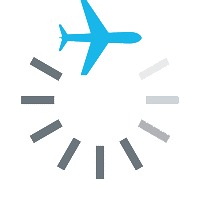Ask Us

What is FAR Part 135?
FAR stands for Federal Aviation Regulations. These are the rules prescribed by the Federal Aviation Administration or FAA. These rules regulate most aviation-related activities, from commercial and private aviation to hot-air ballooning and drone flying. The FARs promote safe aviation for everyone included.
FAR Part 135 lays out the rules for the operators, or as stated in the FAR "Operating Requirements: Commuter and On-Demand Operations and Rules Governing Persons on Board Such Aircraft". It only applies to the aircraft that have 30 or fewer seats or have a maximum payload capacity of 7,500 pounds. This means it applies to most private jets.
What types of Part 135 operators are there?
The operator that meets all necessary conditions and has a Part 135 certificate becomes a Part 135 operator. This is not an easy task - as the Part 135 safety standards are often very high and exceed minimum government requirements.
There are four groups of Part 135 operators:
Single Pilot
This certificate allows the use of only one pilot for all operations.
Single Pilot in Command (PIC)
This certificate allows the use of one PIC and a maximum of three Second in Command pilots (SIC). The pilots can only perform their specific duties and can't trade positions. The certificate allows operation of an aircraft with 9 seats or less. The flights are limited to the USA, Canada, Mexico, and the Caribbean.
Basic
This certificate allows up to 5 pilots, including SICs; a maximum of 5 aircraft, and a maximum of 3 types of aircraft; aircraft must be with 9 seats or less. The flights are limited to the USA, Canada, Mexico, and the Caribbean.
Standard
This certificate doesn't have any restrictions. The operators must be authorized by the FAA for all their operations and they must develop and maintain manuals, training programs, and have the required management positions.
What are the benefits of flying with a Part 135 operator?
The Part 135 operators are the best safety-wise. The pilots are required to have a minimum of 500 total flight hours, 100 cross-country flight hours and 25 night, and cross-country flight hours. The duty time of pilots is strictly regulated to make sure they are always well-rested. The pilots are required to have 10 hours of rest time in-between flights. The aircraft have to pass regular maintenance and usually obtain third-party safety certificates like ARG/US, Wyvern, and IS-BAO.
To put it shortly - exceptional safety.